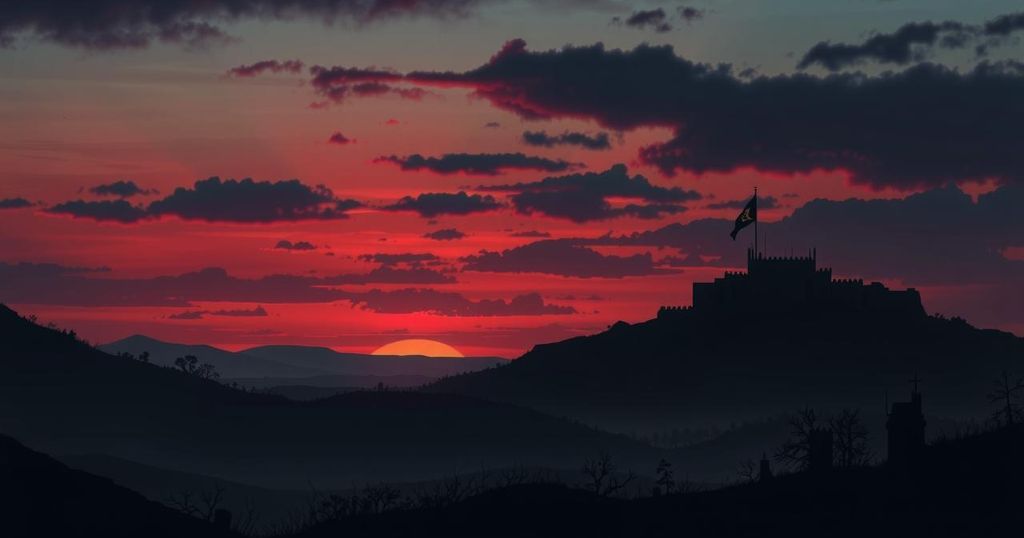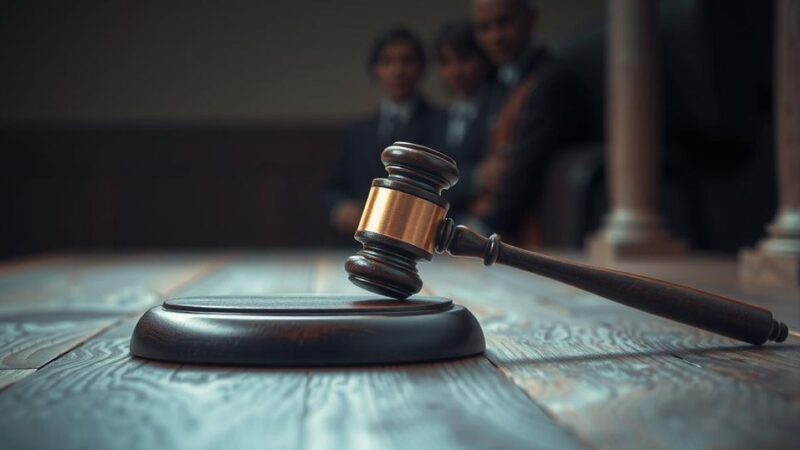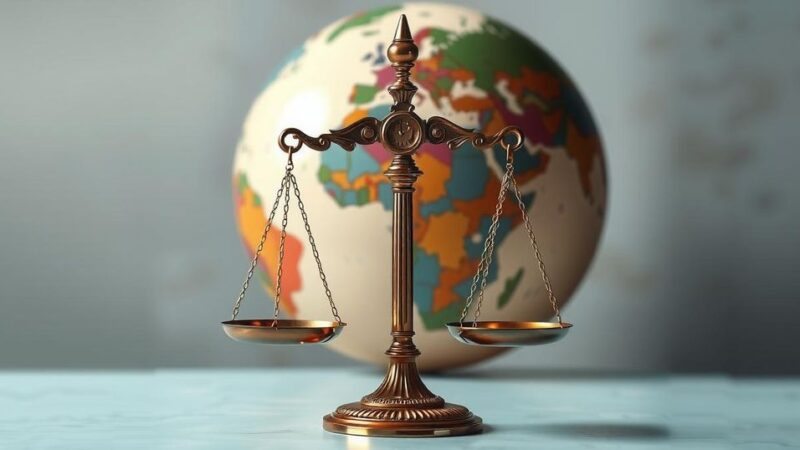Rwanda-backed rebels have claimed control of Goma, escalating tensions in east Congo. Witnesses report ongoing fighting and chaos as residents face looting amid military confrontations. The humanitarian crisis deepens with hundreds of thousands displaced as international actors condemn Rwanda’s involvement and seek solutions to the ongoing conflict.
Armed rebels backed by Rwanda have reportedly advanced into Goma, the largest city in eastern Congo, amid deepening conflict and humanitarian crises within the region. The M23 militia, primarily composed of ethnic Tutsis, has claimed control over the city, though independent verification of this assertion remains lacking. Gunfire has been reported near key locations, including the airport and the city center, indicating ongoing clashes with government-affiliated forces.
Witness accounts reveal scenes of confusion and some looting in Goma. One resident remarked, “There is confusion in the city. Here near the airport, we see soldiers. I have not seen the M23 yet,” highlighting the tension amidst the chaos. Goma, a strategic location, faces a complex backdrop of rebel factions stemming from historical conflicts, especially following the 1994 Rwandan genocide.
The M23 had seized Goma in 2012 but withdrew after a hasty agreement. Currently, the DRC has over 100 armed groups, primarily in its eastern territories, further complicating the security dynamics, especially given the region’s rich mineral resources. Corneille Nangaa, leader of the Congo River Alliance, asserted that government forces are surrendering, though military representatives claim otherwise.
As escalating conflict prompts fear, UN staff and their families began evacuating from Goma into Rwanda. Reports of local residents looting near the airport emerged, demonstrating the desperate circumstances. Meanwhile, dozens of Congolese soldiers surrendered to Rwandan forces. Thousands have fled towards Kigali due to the intensified fighting.
Following the 2012 crisis, the UN deployed a stronger force, leading to the M23’s temporary defeat. However, the militia remains active and launched a renewed offensive in 2022, aligning with Rwanda’s military support. The fighting has displaced hundreds of thousands more, worsening the humanitarian situation in an area already teetering on the brink.
The UN Security Council has condemned Rwanda’s support for the M23 as the Congolese government continues to denounce insinuations of its involvement with Hutu militias. Rwanda’s foreign ministry cited security concerns arising from the clashes near its border. Emergency talks led by Kenyan President William Ruto are anticipated to address this escalating crisis.
The eastern Democratic Republic of Congo has been embroiled in conflict for decades, primarily due to lingering tensions from Rwanda’s 1994 genocide. Various rebel groups, including the M23, have repeatedly asserted dominance in this volatile region. The M23, formed by ethnic Tutsis, has historical roots in the political and military discord that followed the genocide, and its resurgence heightens the precarious security situation amidst the continued displacement of millions.
The situation in Goma is indicative of the larger, tumultuous landscape of the eastern DRC, wherein decades of conflict have resulted in prolonged humanitarian crises and complex military dynamics. The backing of the M23 by Rwanda exacerbates tensions, prompting local and international calls for urgent intervention. The continuation of hostilities threatens not only the region’s stability but also the safety and wellbeing of countless civilians. Diplomatic efforts are crucial to address the underlying causes of the conflict and to secure a peaceful resolution in an area rife with instability and dislocation.
Original Source: www.voanews.com







